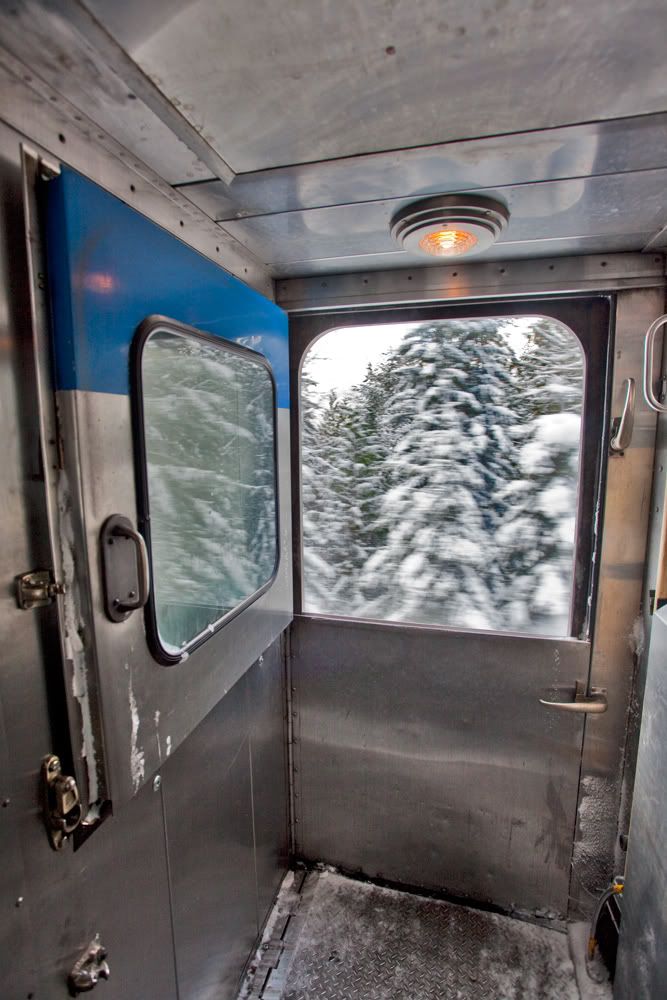How come on off peak and weekend Metra trains some of the Cars are closed off? Please let me know thank you.
Makes the Conducter’s jobs easier. Collecting Fares,Security and picking up
trash after Passengers are part of the job.
If the passenger load warrants (or other conditions, like defective a/c, require), additional cars will be opened to the public. Passenger counts are kept, so the crews have an idea of how many open cars to start with on a given train.
It’s crowd control.
My freind recently traveled Amtrak, and he was told no window seats available yet the train was long and most cars were empty, the whole way ! When I used to take the train I would insist or want my money back or never use the train again. They would usualy give in and let me sit in a coach all by myself, but I never take the train anymore because I don’t want to deal with this potential situation, I should not have to defend myself. Also I should be allowed to open the window. So now I drive, but secretly would like to take the train again sometimes.
I’ve observed over the last several years that Metra tends to keep trainsets together and only opens the necessary amount of cars for the expected passenger count. Consequently, you will see a seven-car Sunday train with only one or two working cars. This probably reduces switching expenses and allows for quick turnarounds of the equipment. As an example, on the Southwest Service, there is an inbound run that arrives at Chicago Union Station at 5:04 PM and departs for Orland Park at 5:18 PM. I am personally familiar with this turnaround as I often wait on the platform for the inbound passengers to disembark before I can board.
In reply to the previous post, I don’t believe that there has been any passenger equipment built in the United States since 1950 that didn’t have sealed windows.
Paul, I wonder if he was referring to vestibule windows/upper halves of dutch doors. About forty or more years ago, some train crews let passengers open these, and often warned them to be careful. Forty-two years ago, as I was riding the Royal Palm from Cincinnati to Chattanooga, the flagman took me out to the vestibule as we approached the Kentucky River, and opened the one piece door (he did not open the trap) so I could get a good look at the bridge as we approached it. I kept a tight grip on a hand rail while I looked out and ahead.
I did have a disturbing experience about three years later, when I was riding the Silver Meteor from Miami to Jacksonville. As I was walking through the train after a station stop, I came to a vestibule with not only an open door, but an open trap. I quickly closed both, hanging on because we were already up to a good speed. I hope the porter had not been left behind.
Johnny
Vestubule dutch doors are great. But I’m also familiar with old comuter cars where the windows opened .
And it usually required the strength of Hercules to open them. I remember seeing carmen at Randolph Street using a pry bar to raise the windows on the non-air conditioned South Shore MU cars prior to departure.
What is the excess fuel use (in general) between running, say, a weekend local with two occupied cars and three or four empties, and just enough cars to make a minimal train? And IS there a minimum number of coaches that should be attached to the HEP in revenue service for Metra? I mean this from an operating / safety point of view, not an accommodate-the-crowds point of view.
This is common, particularly on the lesser-traveled lines. More than once I’ve had to reverse course on the platform at O’Hare to get onto one of the two rear cars usually open on the 9PM outbound departure.
Practically, they can’t readily adjust the number of cars in the consist to fit the passenger occupancy, so they regulate car usage instead. Closing down a car saves on HEP consumption and thereby lessens total fuel consumption. Not to mention conductor/trainman convenience.
At least on the North Central line, when passenger count exceeds expectations, the crew does open an additional car. But, occasionally, the engineer misaligns the train and places the unoccupied cars closest to the station and/or boarding passenger groups. Irritating!
Johnny,
It’s almost 60 years ago that I rode the New Royal Palm over the same stretch and on to Jacksonville. I hung out of an open dutch door nearly the entire length of the Rathole Division ducking in only when we passed another train or entered one of the many tunnels. I’d occasionally be joined by our porter or a member of the train crew. At one point there was a freight train derailment on the track adjacent to ours and we crawled past two big hooks struggling to right the derailed cars. My face was nearly black from the diesel exhaust and it took me a half hour in the mens room to get the stuff off me and to the best I could off my clothes.
Mark
One of the many and varied negative experiences I’ve had with Amtrak includes boarding a San Diego-L.A. train mid-route (SJC) with a party of at least six people and having to struggle to find ANY open seats (fat chance of any together!) because the conductor had closed off one whole coach. Funny how things like that make I-5 traffic look more palatable.
While we’re on the topic of dutch doors, VIA still has some pretty snazzy ones on The Canadian and the Skeena. This was fun, since I was wearing a t-shirt and it was somewhere between -20 and -40…

